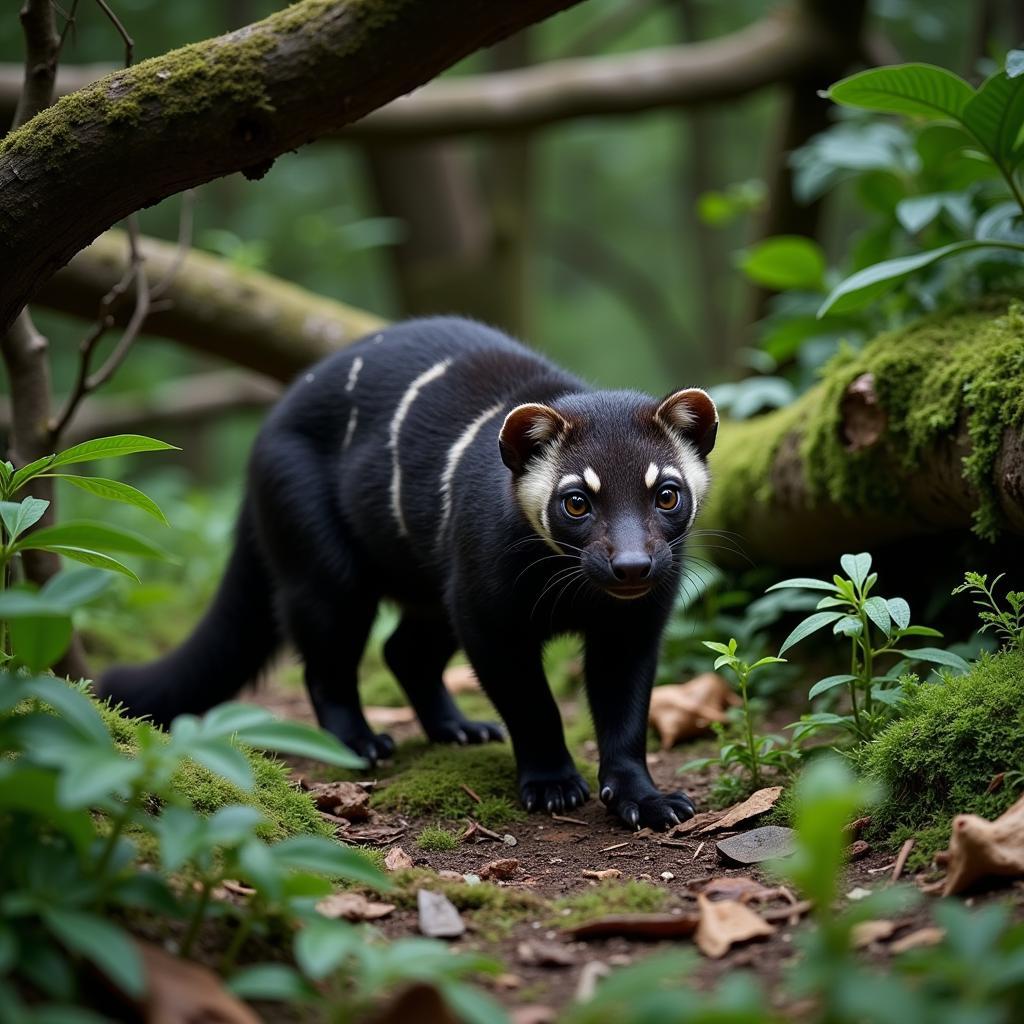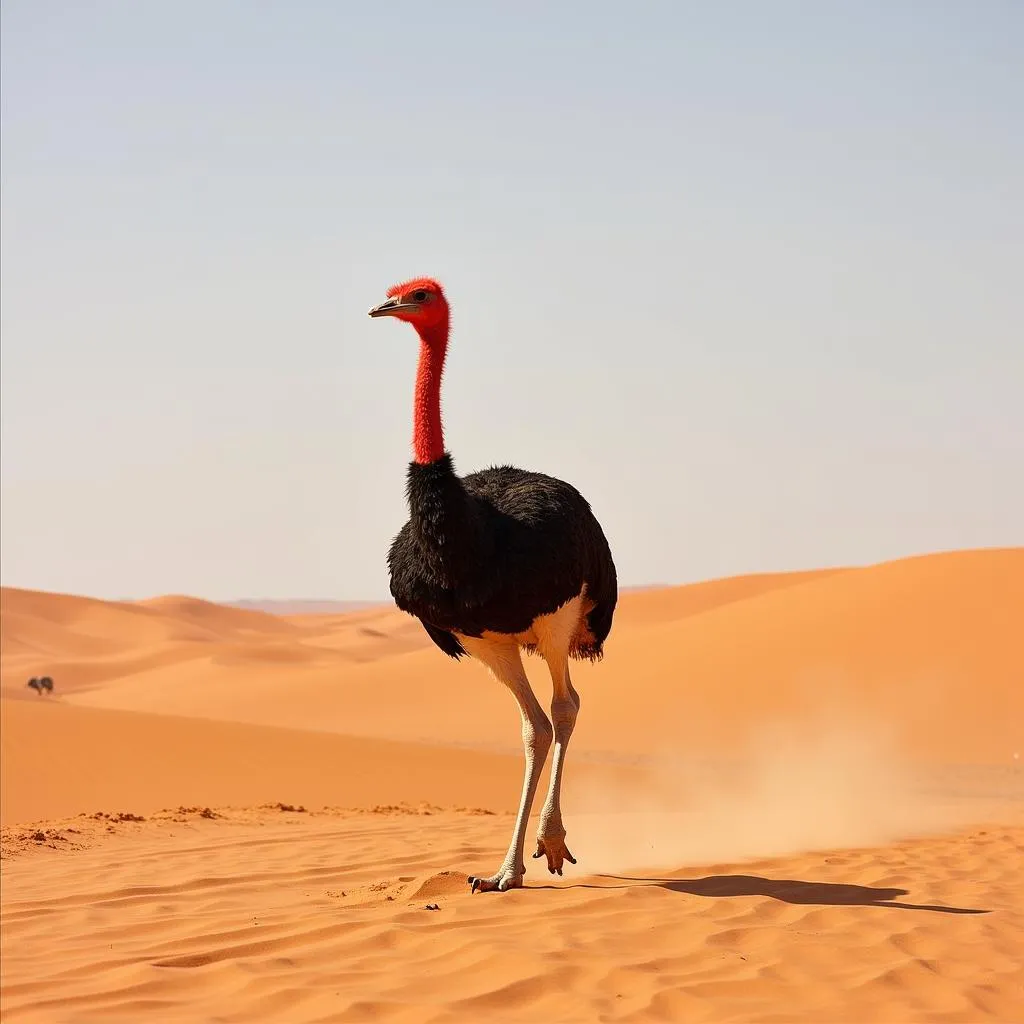Unveiling the African Civet: Scientific Name and Fascinating Facts
The African civet, scientifically known as Civettictis civetta, is a captivating creature native to sub-Saharan Africa. This nocturnal mammal, with its distinctive markings and musky scent, plays a unique role in the African ecosystem. Let’s delve into the world of this intriguing animal, exploring its scientific classification, habitat, diet, and the cultural significance it holds across the continent.
Understanding the Civettictis civetta Classification
The African civet’s scientific name, Civettictis civetta, places it within the Viverridae family, which includes other small to medium-sized carnivorans like genets, mongooses, and oyans. The genus Civettictis distinguishes it as the only species within this particular group. This classification highlights its unique evolutionary path and distinct characteristics. Understanding the scientific name provides a crucial foundation for further exploration of the animal’s biology and ecological role. What makes Civettictis civetta so unique within the Viverridae family? Its larger size, distinctive black and white markings, and erectile dorsal mane set it apart from its relatives.
Exploring the Habitat and Diet of the African Civet
African civets are highly adaptable and thrive in a variety of habitats, ranging from dense forests and woodlands to savannas and even mountainous regions. Their nocturnal nature allows them to avoid the intense heat of the African sun, and they are often found near water sources. Their diet is equally diverse, consisting of fruits, insects, small mammals, reptiles, and even carrion. This adaptability and opportunistic feeding behavior contributes to their success in various ecosystems across the continent. They are important seed dispersers, playing a vital role in maintaining the biodiversity of their environment.
 African Civet in its Natural Habitat
African Civet in its Natural Habitat
The Cultural Significance of the African Civet
Beyond its biological importance, the African civet holds cultural significance in many African communities. In some cultures, its musk, known as civetone, is traditionally used in perfumes and traditional medicine. This has led to both reverence and exploitation of the animal, highlighting the complex relationship between humans and wildlife in Africa. The use of civetone in perfumery also connects the African civet to the global trade and economy.
Civetone: A Valuable Commodity
Civetone, a secretion from the perineal glands of the African civet, is highly prized for its fixative properties in perfumery. This has historically driven the capture and farming of civets for their musk, raising ethical concerns about animal welfare. While synthetic alternatives to civetone exist, the natural product continues to be sought after by some perfumers.
 Civetone Extraction Process
Civetone Extraction Process
Conservation Status and Threats to the African Civet
Although the African civet is currently listed as a species of “Least Concern” by the IUCN, it faces increasing threats from habitat loss, human-wildlife conflict, and the illegal wildlife trade. Understanding these threats is crucial for implementing effective conservation strategies to ensure the long-term survival of this fascinating animal. Protecting the African civet and its habitat contributes to the overall health and biodiversity of the African ecosystem.
What is the lifespan of an African Civet?
African civets can live up to 15-20 years in the wild.
 African Civet Conservation Efforts
African Civet Conservation Efforts
Conclusion: The Future of Civettictis civetta
The African civet, Civettictis civetta, plays a vital role in the African ecosystem, both ecologically and culturally. By understanding its scientific classification, habitat, diet, and the challenges it faces, we can better appreciate the importance of conserving this unique animal for future generations. Further research and conservation efforts are essential to ensure the continued survival of the African civet and the rich biodiversity of the African continent.
FAQ: African Civet
- What is the scientific name of the African civet? Civettictis civetta.
- What does an African civet eat? Fruits, insects, small mammals, reptiles, and carrion.
- Where does the African civet live? Sub-Saharan Africa, in various habitats including forests, woodlands, and savannas.
- What is civetone? A musk secreted by the African civet used in perfumery.
- Is the African civet endangered? Currently listed as Least Concern, but faces increasing threats.
- What are the main threats to the African civet? Habitat loss, human-wildlife conflict, and the illegal wildlife trade.
- How long do African civets live? 15-20 years in the wild.
Need support? Contact us at Phone: +255768904061, Email: [email protected] or visit us at Mbarali DC Mawindi, Kangaga, Tanzania. We have a 24/7 customer service team.


